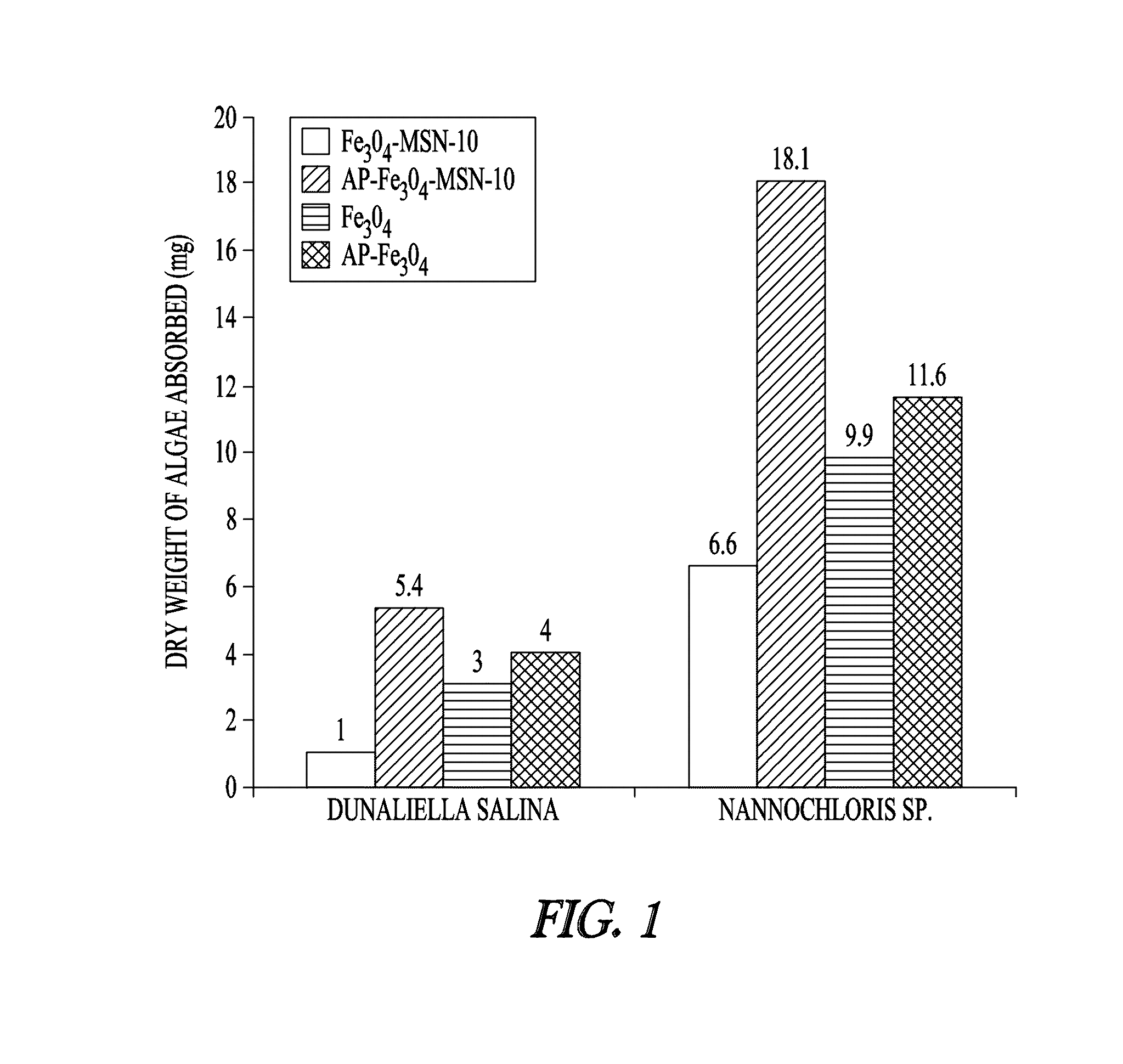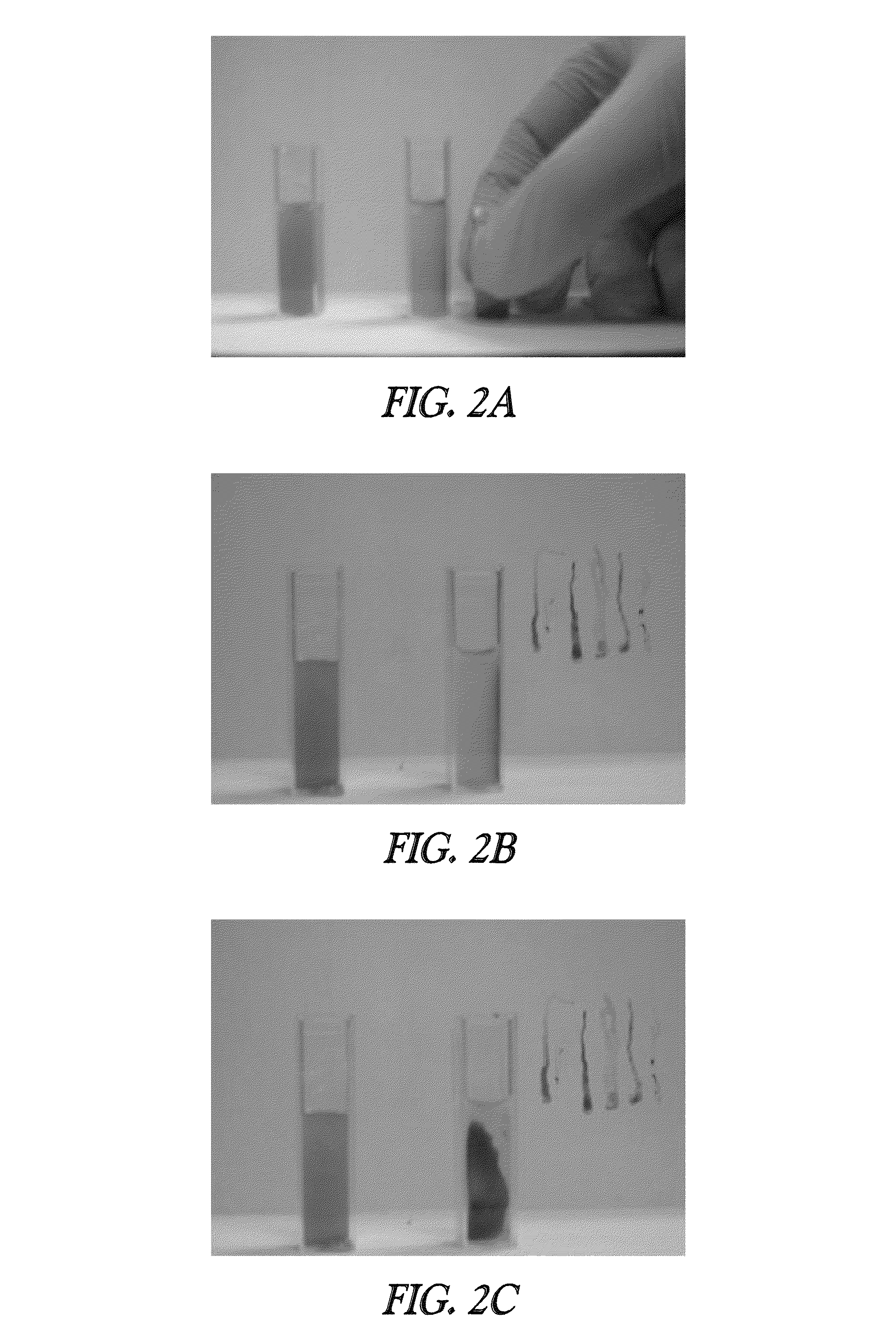Magnetic mesoporous material for the sequestration of algae
a mesoporous material and algae technology, applied in the field of magnetic mesoporous material for algae sequestration, can solve the problems of algae affecting the filter, affecting the filter, and affecting the filter, so as to achieve the effect of less energy, less time, and cheaper starting materials
- Summary
- Abstract
- Description
- Claims
- Application Information
AI Technical Summary
Benefits of technology
Problems solved by technology
Method used
Image
Examples
example 1
Synthesis of Mesoporous Silicate Nanoparticles MSN-10
[0093]MSN-10 nanoparticles were prepared using a nonionic block co-polymer Pluronic P104 surfactant. For a typical synthesis, P104 (7 g) was dissolved in a solution containing H2O (164 g) and 4M HCl (109 g) at 55° C. under constant stirring for an hour. Tetramethylorthosilicate (10.64 g, “TMOS”) was added to the surfactant solution and the mixture was stirred for 24 hours at 55° C. The reaction mixture was then transferred into a Teflon-lined autoclave and heated at 150° C. for 24 hours. The resultant white precipitate was filtered, washed with methanol, and dried in air. The surfactant was removed by calcining in air at 550° C. for 6 hours.
example 2
Synthesis of Fe3O4-MSN-10
[0094]Iron(III) nitrate (Fe(NO3)3.9H2O) was used as the iron precursor. The iron(III) nitrate (1.26 g) was completely dissolved in ethanol (10 ml) and then MSN-10 particles (0.5 g) were suspended in the Fe(NO3)3 / ethanol solution. The suspension was left to dry in air at 30° C. with constant stirring. The solid was then calcined in air at a heating rate of 10° C. per minute from to 300° C. The resulting brownish powder was denoted as Fe2O3-MSN-10. Fe2O3-MSN-10 was reduced by calcining in a constant flow of H2 (1.67 mL / s) at 300° C. for 5 hours, giving Fe3O4-MSN-10, a black powder.
example 3
Synthesis of Amine-Functionalized Fe3O4-MSN-10 (AP-Fe3O4-MSN-10)
[0095]Amine-functionalized Fe3O4-MSN-10 was prepared by grafting 3-aminopropyltrimethoxysilane (1.5 mmol, “APTMS”) to the surface of Fe3O4-MSN-10 (1 g) in refluxing toluene (100 mL) for 24 hours. The resulting AP-Fe3O4-MSN-10 particles were separated by magnetic decantation using external neodymium magnet, washed with methanol, and dried under vacuum for 24 hours.
PUM
 Login to View More
Login to View More Abstract
Description
Claims
Application Information
 Login to View More
Login to View More - R&D
- Intellectual Property
- Life Sciences
- Materials
- Tech Scout
- Unparalleled Data Quality
- Higher Quality Content
- 60% Fewer Hallucinations
Browse by: Latest US Patents, China's latest patents, Technical Efficacy Thesaurus, Application Domain, Technology Topic, Popular Technical Reports.
© 2025 PatSnap. All rights reserved.Legal|Privacy policy|Modern Slavery Act Transparency Statement|Sitemap|About US| Contact US: help@patsnap.com



